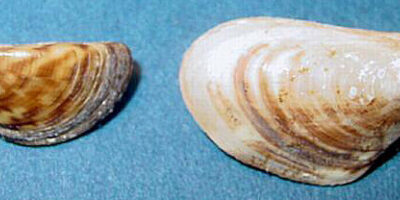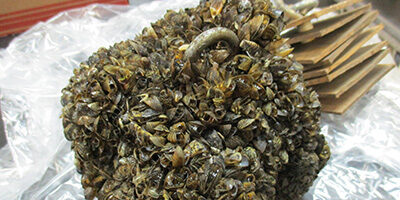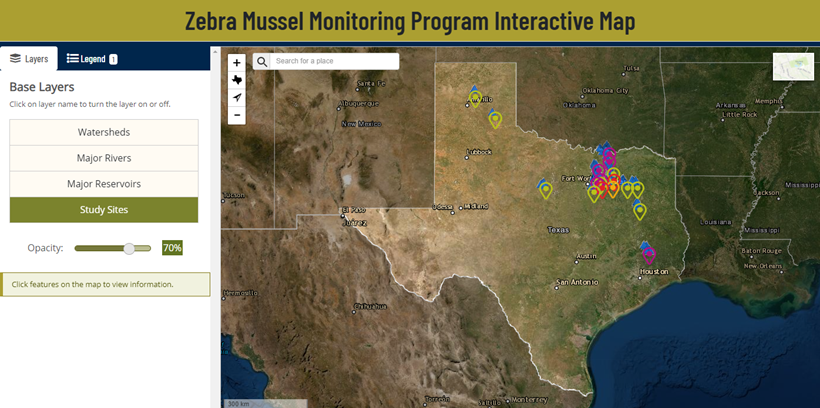The zebra mussel (Dreissena polymorpha) is an invasive species that has spread rapidly in the United States. The first confirmed detection of zebra mussels in Texas occurred in 2009 at Lake Texoma along the Texas-Oklahoma border. As of December 2025, 34 lakes in Texas are infested with zebra mussels according to the Texas Parks and Wildlife lake status.
The Zebra Mussel Monitoring Program for Texas (ZMMP) began in April 2010 and has expanded over time in response to the continued spread of zebra mussels in Texas. The ZMMP focuses on presence/absence, early detection, and spatio-temporal population dynamics of larval (veliger) and juvenile or adult zebra mussels in locations across Texas. The ZMMP also incorporates water quality monitoring and sampling to learn which water-quality thresholds may limit (or accelerate) zebra mussel distribution.
Zebra mussel counts/densities, water-quality data, lake status, and other information about the locations we monitor are available through the map below or the individual locations linked in the navigation bar.

Zebra mussels (Dreissena polymorpha, left) and quagga mussels (Dreissena rostriformis bugensis, right) are both invasive species. They are closely related and are jointly referred to as dreissenid mussels.
The ZMMP includes inspections for both invasive species but has not yet detected quagga mussels at any of the Texas location.
Photo courtesy of the USGS Nonindigenous Aquatic Species Web Site.
The ZMMP uses a suite of detection and quantification methods to determine spatial distributions, dispersal, spread, population dynamics, and reproductive phenology of both zebra and quagga mussels.

Open the ZMMP Interactive Map to see the latest zebra mussel detections and USGS sites for sample collection.

USGS Resources
Texas Resources